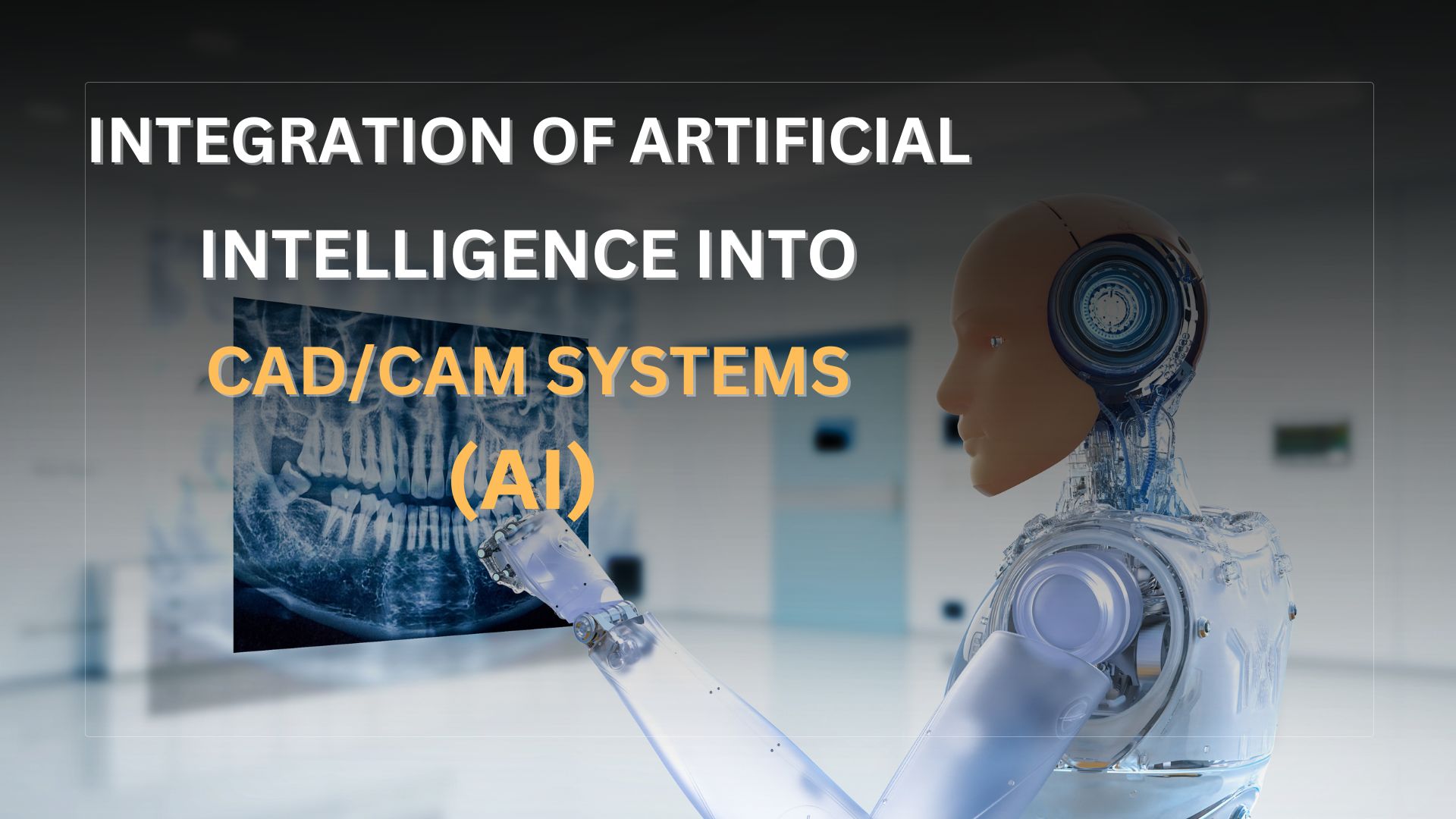Integration Of Artificial Intelligence Into CAD/CAM systems
Artificial intelligence (AI) is increasingly being integrated into CAD/CAM systems to enhance diagnostic accuracy and treatment planning. AI algorithms can analyze digital impressions and X-rays to assist in designing dental restorations with greater precision. Additionally, AI-driven software can predict potential issues and suggest optimal design modifications, streamlining workflows and reducing the likelihood of errors.
AI's capabilities go beyond mere design accuracy. By leveraging machine learning, these systems can learn from vast amounts of data, enabling them to recognize patterns and anomalies that might escape human detection. This means that AI can assist in the early detection of dental health issues, providing a proactive approach to dental care.
Moreover, AI-powered CAD/CAM systems can automate routine tasks, allowing dental professionals to focus on more complex and critical aspects of patient care. For example, AI can handle tasks such as determining crown margins, designing crowns, and adjusting occlusion, ensuring they are completed quickly and accurately.
Patient customization is another significant benefit of AI integration. AI can tailor treatment plans and restoration designs to match the unique anatomical features of each patient, enhancing the fit and function of dental restorations. This personalized approach not only improves patient outcomes but also increases overall satisfaction with the treatment.
AI also enhances collaboration and communication within dental teams. By providing real-time insights and data-driven recommendations, AI ensures that all team members are on the same page, leading to more cohesive and coordinated treatment plans.
Furthermore, AI can facilitate remote consultations and tele dentistry. Dentists can use AI to analyze patient data and images remotely, offering accurate diagnoses and treatment recommendations without the need for an in-person visit. This is particularly valuable in underserved or remote areas where access to dental care may be limited.
Regarding education and training, AI can be a valuable tool for dental professionals. AI-driven virtual training simulators can provide hands-on experiences and continuous learning opportunities, helping dentists stay up-to-date with the latest techniques and technologies.
In summary, the integration of AI into CAD/CAM systems is revolutionizing the dental industry. It enhances diagnostic accuracy, streamlines workflows, reduces errors, and provides personalized patient care. As AI technology continues to evolve, its impact on CAD/CAM systems will grow, paving the way for more innovative and efficient dental solutions.
"CAD CAM Dental Lab updates are news and updates about what’s new in the world of CAD/CAM. Make sure to activate the notification button to receive the latest news from our platforms.
"الذكاء الاصطناعي (AI) يتم دمجه بشكل متزايد في أنظمة CAD/CAM لتحسين دقة التشخيص والتخطيط العلاجي. يمكن لخوارزميات الذكاء الاصطناعي تحليل الانطباعات الرقمية والأشعة السينية للمساعدة في تصميم التركيبات بدقة أكبر. بالإضافة إلى ذلك، يمكن للبرامج المدفوعة بالذكاء الاصطناعي التنبؤ بالمشكلات المحتملة واقتراح تعديلات تصميمية مثلى، مما يبسط سير العمل ويقلل من احتمالية الأخطاء. تتجاوز قدرات الذكاء الاصطناعي مجرد دقة التصميم. من خلال الاستفادة من التعلم الآلي، يمكن لهذه الأنظمة التعلم من كميات كبيرة من البيانات، مما يمكنها من التعرف على الأنماط والشذوذات التي قد تغيب عن أعين البشر. هذا يعني أن الذكاء الاصطناعي يمكنه المساعدة في الكشف المبكر عن المشاكل الصحية للأسنان، مما يوفر نهجًا استباقيًا لرعاية الأسنان. علاوة على ذلك، يمكن لأنظمة CAD/CAM المدفوعة بالذكاء الاصطناعي أتمتة المهام الروتينية، مما يتيح للمحترفين في مجال الأسنان التركيز على الجوانب الأكثر تعقيدًا وحرجة لرعاية المرضى. على سبيل المثال، يمكن للذكاء الاصطناعي التعامل مع مهام مثل تحديد هوامش التاج وتصميم التاج وتعديل الإطباق، مما يضمن إنجازها بسرعة ودقة. التخصيص للمريض هو فائدة أخرى مهمة من دمج الذكاء الاصطناعي. يمكن للذكاء الاصطناعي تخصيص خطط العلاج وتصاميم التركيبات لتتناسب مع الميزات التشريحية الفريدة لكل مريض، مما يعزز ملاءمة ووظيفة التركيبات السنية. هذا النهج الشخصي لا يحسن فقط نتائج المرضى بل يزيد أيضًا من رضاهم العام عن العلاج. كما يعزز الذكاء الاصطناعي التعاون والتواصل داخل فرق الأسنان. من خلال تقديم رؤى في الوقت الفعلي وتوصيات مستندة إلى البيانات، يضمن الذكاء الاصطناعي أن يكون جميع أعضاء الفريق على نفس الصفحة، مما يؤدي إلى خطط علاجية أكثر تماسكًا وتنسيقًا. علاوة على ذلك، يمكن للذكاء الاصطناعي تسهيل الاستشارات عن بعد وطب الأسنان عن بعد. يمكن لأطباء الأسنان استخدام الذكاء الاصطناعي لتحليل بيانات المرضى والصور عن بعد، وتقديم تشخيصات دقيقة وتوصيات علاجية دون الحاجة إلى زيارة شخصية. هذا مفيد بشكل خاص في المناطق المحرومة أو النائية حيث قد يكون الوصول إلى رعاية الأسنان محدودًا. فيما يتعلق بالتعليم والتدريب، يمكن أن يكون الذكاء الاصطناعي أداة قيمة للمحترفين في مجال الأسنان. يمكن لمحاكيات التدريب الافتراضي المدفوعة بالذكاء الاصطناعي توفير خبرات عملية وفرص تعلم مستمرة، مما يساعد أطباء الأسنان على مواكبة أحدث التقنيات والتكنولوجيات. باختصار، دمج الذكاء الاصطناعي في أنظمة CAD/CAM يحدث ثورة في صناعة الأسنان. إنه يعزز دقة التشخيص، ويبسط سير العمل، ويقلل من الأخطاء، ويوفر رعاية شخصية للمرضى. ومع استمرار تطور تكنولوجيا الذكاء الاصطناعي، ستزداد تأثيرها على أنظمة CAD/CAM، مما يمهد الطريق لحلول أسنان أكثر ابتكارًا وكفاءة. "تحديثات مختبر CAD CAM للأسنان هي أخبار وتحديثات حول ما هو جديد في عالم الكاد كام تأكد من تفعيل زر الإشعارات لتلقي آخر الأخبار من منصاتنا.

